Photo / Video News & Reviews
Scubaverse Underwater Photographer Interview: Joe Daniels
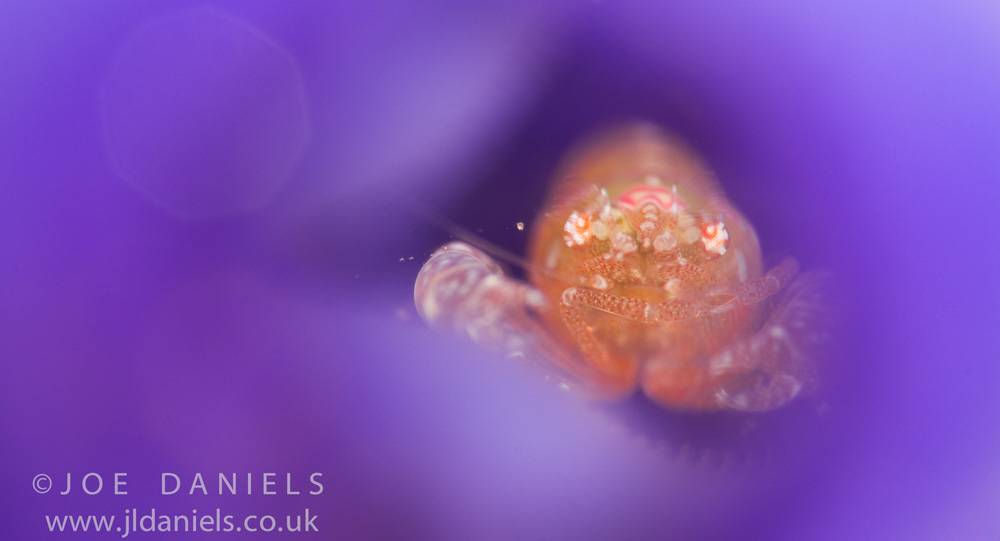
In an ongoing series, Scubaverse.com’s Underwater Photography Editors Nick and Caroline Robertson-Brown talk to underwater photographers from around the world that they admire.
This interview is with award-winning photographer Joe Daniels.
 Thank you for asking me to participate in this interview! Originally I am from Suffolk, England and I am now based in South West France. For the past ten years I have been fortunate enough to work on various different marine conservation projects and diving operations around the world. Through diving and spending a lot of time underwater I developed a passion for underwater photography. Now I can’t bear to be in the water without a camera, whether it’s a murky pond or bustling coral reef.
Thank you for asking me to participate in this interview! Originally I am from Suffolk, England and I am now based in South West France. For the past ten years I have been fortunate enough to work on various different marine conservation projects and diving operations around the world. Through diving and spending a lot of time underwater I developed a passion for underwater photography. Now I can’t bear to be in the water without a camera, whether it’s a murky pond or bustling coral reef.
My highest achieving image so far would probably be my Tunicate Shrimp which earnt gold in the Traditional Macro category in the Our World Underwater competition. I have also placed in Outdoor Photographer of the year twice, HIPA Life in Colour and World Oceans Day photo competition. A Whale Shark image of mine was used in BEIJING by Humane Society International and the Jane Goodall Institute. The exhibit, entitled “The Price Behind the Taste—Protect Sharks, Don’t Eat Shark Fins,” was to enlist public support for the protection of sharks. I was very proud to be included in this campaign.
So far in my career I have spent the majority of my time across two locations – The muck diving mecca of Ambon in eastern Indonesia and the idyllic Indian Ocean archipelago of Seychelles. The two locations could not be more different photographically which I think helps diversify my portfolio. I have also been to Raja Ampat twice in the past three years, the marine life there is astounding and is very hard to beat.
N/C: How did your underwater photography start?
JD: As soon as I left college I went and volunteered on a Marine Conservation Project in Seychelles. There I was involved in reef monitoring where we did 2 survey dives per day from Monday to Friday. This wasn’t enough in water time for me so I spent all my spare time and weekends snorkelling. One weekend I borrowed a small clear dry bag for my pentax point and shoot camera. After going out snorkelling with the camera and taking some terrible pictures of Turtles and various corals I was hooked.
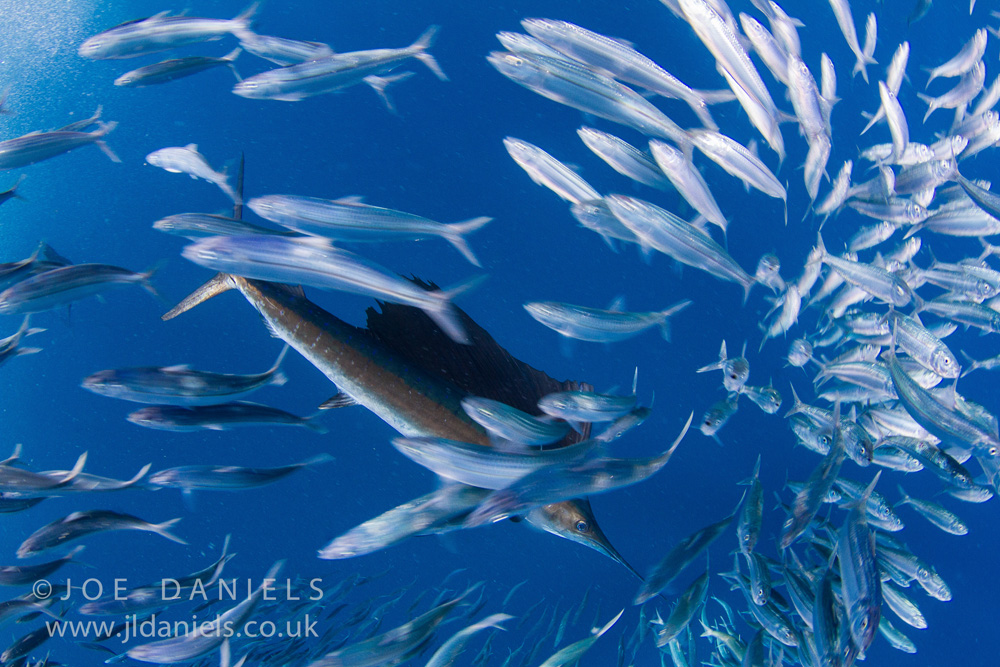
N/C: What is your favourite u/w camera equipment (past & present) & why?
JD: I love to shoot cfwa images so my Nauticam mini dome and Tokina 10-17mm fisheye is a favourite set up of mine. I have also recently acquired a Trioplan 100mm f2.8 so I am looking forward to shooting and experimenting with that later this year.
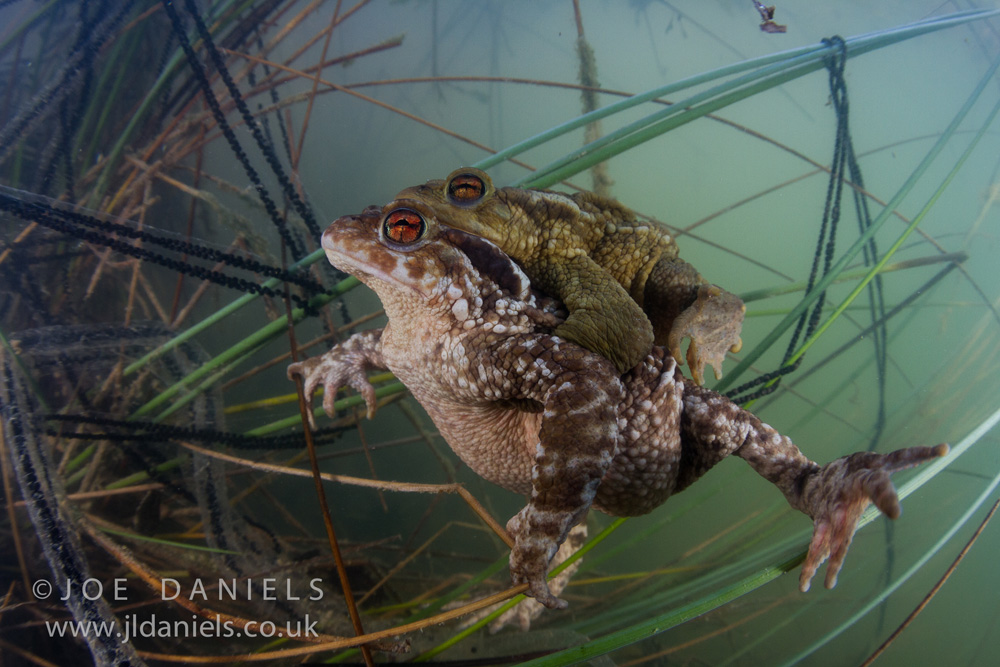
N/C: What would be your advice to anyone new to underwater photography?
JD: Not to get obsessed buying the latest and greatest camera setup. Of course buy the best you can afford, but it’s not everything. Focus on subject selection, composition and light. It also makes a huge difference if you are a comfortable and competent underwater.
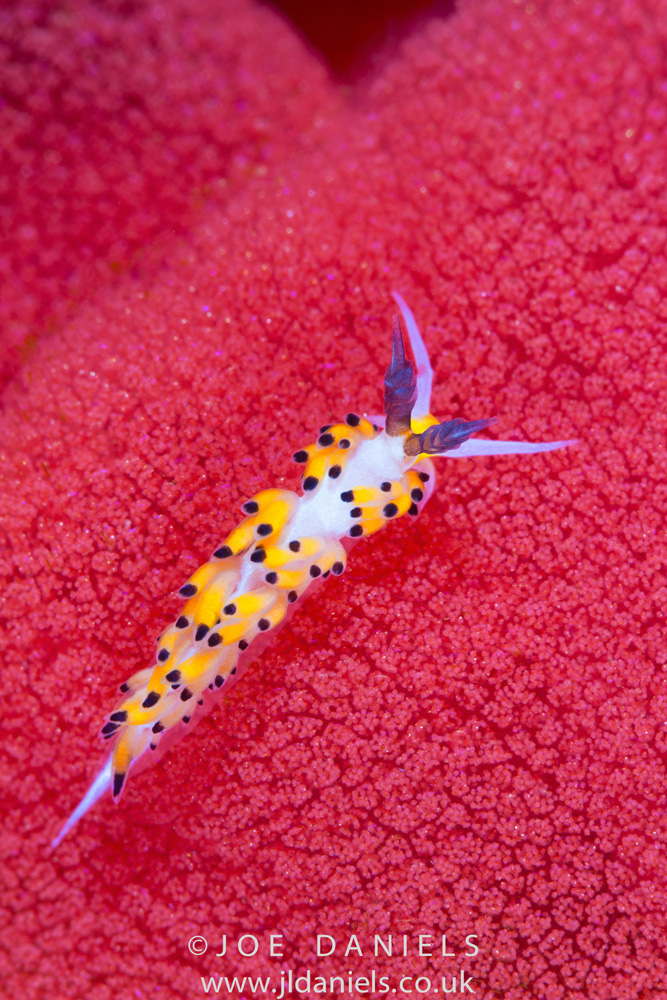
N/C: What, or who, has been your single biggest inspiration for your underwater photography?
JD: When I first started taking pictures underwater I loved to show people what I had seen whilst I was underwater, I still do. Now I like to show people things that they may have never seen before, or animals they know of but shown in a different way. I just want to share my enthusiasm for the underwater world and hopefully get others excited about it too. There are many photographers that inspire my work, notably Thomas Peschak his images continually amaze me. Alex Mustard’s images are a technical masterclass and are always a joy to behold. Eduardo Acevedo Fernandez, Laurent Ballesta and David Doubilet all produce jaw dropping images and all have large influences on my work.
N/C: Where is your favourite dive location, and is it for the photography?
JD: This is a tough question. I have favourite locations for differing reasons, and there are many places I have not had the chance to get to yet. For macro it has to be Ambon. The abundance of subjects there is endless. The thing I like most about diving in Ambon is that it’s not just macro. There are incredible jetty’s, caves, reefs and even a wreck. So photographically its fantastic. For wide angle I would have to say Misool in Raja Ampat. The health and diversity of the reef systems there are world class. It is also a massive conservation success story being protect by a patrolled no take zone which is twice the size of Singapore. The Yucatan Peninsular, Mexico also has some spectacular photographic opportunities with its Cenotes, Sailfish and Sharks. Finally Seychelles will always be a special place for me where I’ve had many special encounters.

N/C: What are you views on marine life manipulation, moving subjects?
JD: With regards to moving subjects especially in macro photography I am against it. Picking animals up and moving them just for a photo is not acceptable. I would be a hypocrite if I was to say that I didn’t have images where the animal had been coaxed a little to get a better image. I think there would be very few photographers that have never coaxed a critter to a different position for a better image, if they are honest. I think with the rise of social media it has got out of hand as macro photography is very competitive now, photographers are so focused on getting as many likes as possible their ethics go out of the window a bit. On the other hand I have been on dives with photographers that are very anti manipulation and will not tolerate it at all, but will then take hundreds of pictures of one subject then swim straight over the subject wiping it out in one fin kick and not even noticing.
Every time we enter the water we make an impact, it’s what we do to reduce this impact. Don’t forget those basic diving skills you learnt in your open water course and be specially aware. Talk to your dive guide and ask them just to show you, instead of positioning. They are just trying to please you when they move things as it usually increases their tip. The dive operations can also have a code of conduct for photographers to abide by whilst diving to reduce their impact. Marine life manipulation is not isolated to macro photography. Tiger Beach is a good example, the sharks are lured in front of photographers cameras with bait for sunset splits or a perfect pass. I’m not saying I’m against shark diving practices, quite the opposite. If we can make them financially profitable sharks are much less likely to be killed for their fins. I suppose what I am trying to say it that it’s not a Black & White issue. We have to be responsible in our actions and have some foresight to ensure these amazing creatures continue to thrive and photographers can continue to photograph them. So the less we poke and prod them the more likely they are to stick around.
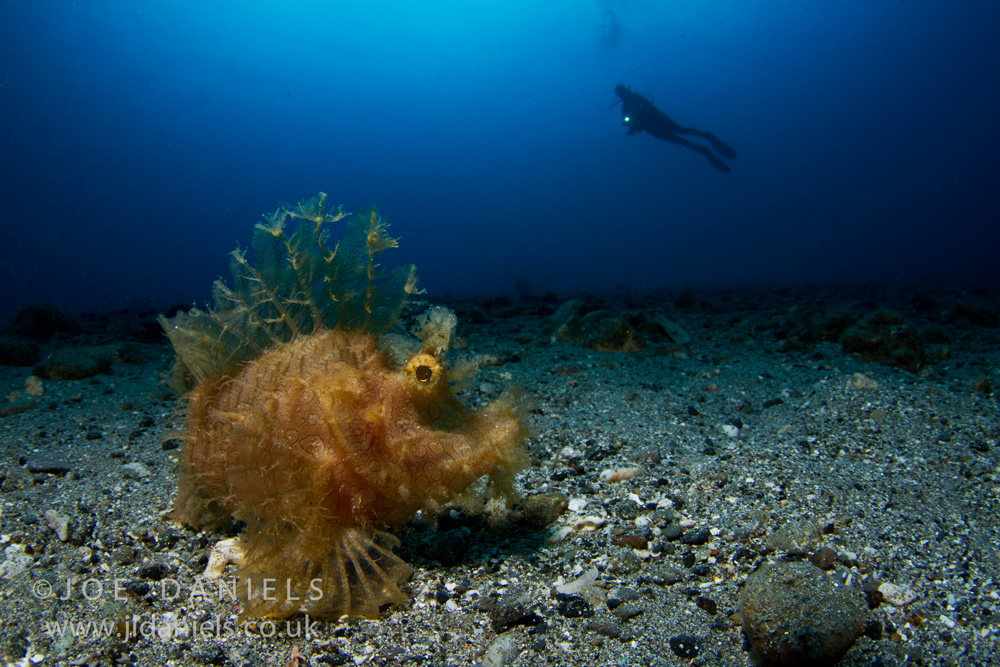
N/C: What do you look for when you are making your images?
JD: It depends on what I’m shooting and in what conditions I am shooting in. For macro I am looking for a willing subject in a good position, generally raised up off the substrate if I want a black background. What I really like to shoot is a subject with an attractive background. If there is current or surge I will try and stay away from super macro and shallow DOF. For wide angle I am always looking for the best light, I can’t resist a Indonesian jetty with shafts of light streaming through the wooden slats. When the light is good I’m looking for a subject to fill the foreground and complete the image. I also love to incorporate the surface into my images, whether it’s a split image or incorporating Snell’s window. These are usually the images that stand out to people that are not divers or spend much time underwater. I think it gives the viewer something to relate to. No matter what technique I’m using I always shoot to the conditions. Whether that means streamlining my gear to catch up with speeding Sailfish or simplifying my images when there is current. When the conditions change so does my plan for making images, this is not necessarily a bad thing. Varying conditions may diversify your portfolio. One of my favourite images is a Turtle silhouette, instead of the classic sunbeams behind it (which I was initially after) it poured with rain so it has rain drops hitting the surface filling the rest of the frame. Shooting in those conditions created an image that stands out from the rest.
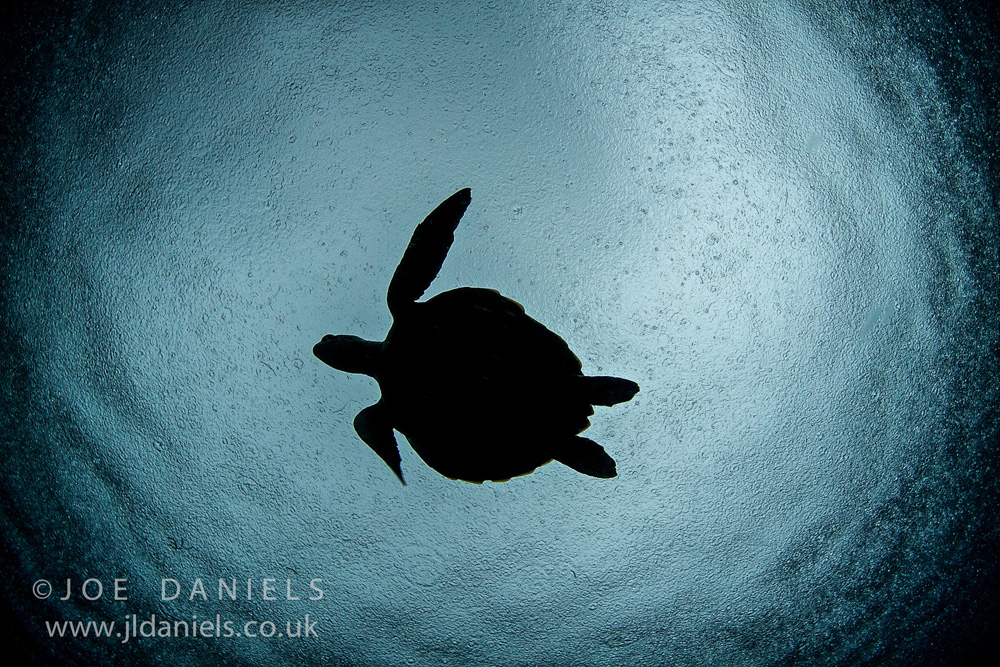
N/C: What motivates you to take u/w photos?
JD: Simply because I love it! I love the whole process of making pictures from deciding what set up to use, setting everything up and being underwater searching for a subject. I love that I can use my images to promote marine conservation issues and to just show to people how amazing the underwater world is. I’m constantly learning and driven to take better pictures.
N/C: If you could photograph any one thing/place what or where would that be?
JD: Although I have been to Raja Ampat twice I would love to go back and visit the Blue Water Mangroves of Misool. A shallow coral reef with over hanging Mangroves and shafts of light streaming through onto Barrel Sponges and Soft corals sounds incredible, everything I like to shoot all rolled into one dive site.
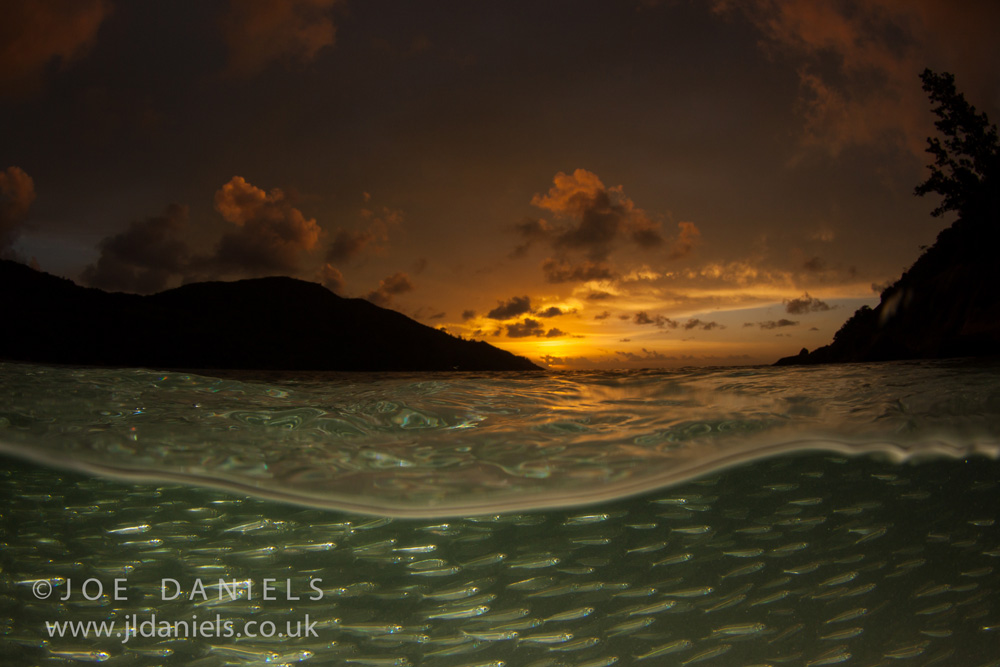
Follow the work of Joe Daniels at www.jldaniels.co.uk or on his Facebook page and instagram @j_l_daniels
Blogs
Diver Discovering Whale Skeletons Beneath Ice Judged World’s Best Underwater Photograph
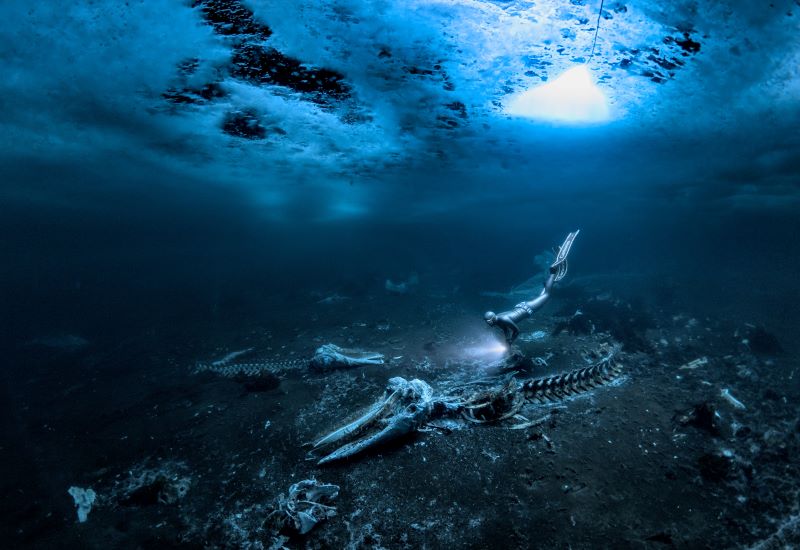
An emotive photograph showing a freediver examining the aftermath of whaling sees
Alex Dawson from Sweden named Underwater Photographer of the Year 2024. Dawson’s
photograph ‘Whale Bones’ triumphed over 6500 underwater pictures entered by underwater
photographers from around the world.
“Whale Bones was photographed in the toughest conditions,” explains chair of judging
panel Alex Mustard, “as a breath-hold diver descends below the Greenland ice sheet to bear
witness to the carcasses. The composition invites us to consider our impact on the great
creatures of this planet. Since the rise of humans, wild animals have declined by 85%. Today,
just 4% of mammals are wildlife, the remaining 96% are humans and our livestock. Our way
needs to change to find a balance with nature.”
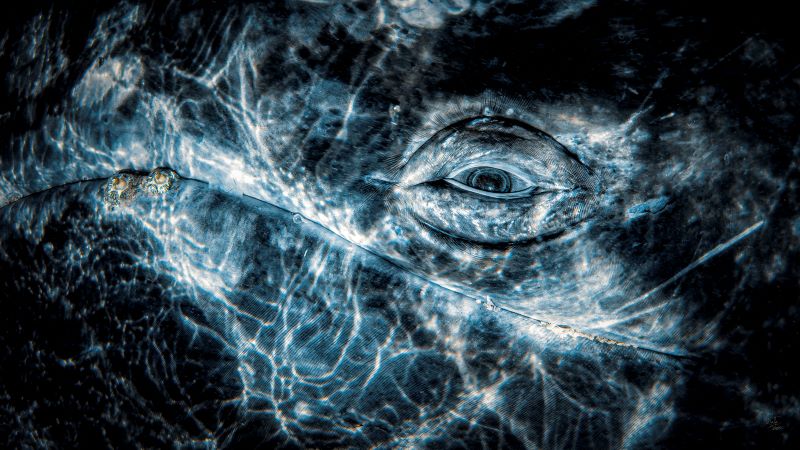
Photo: Rafael
Fernandez Caballero
Whales dominated the winning pictures this year with Spanish photographer Rafael
Fernandez Caballero winning two categories with his revealing photos of these ocean giants:
a close up of a grey whale’s eye and an action shot of a Bryde’s whale engulfing an entire bait
ball, both taken in Magdalena Bay, Baja California, Mexico. Fernandez Caballero took ‘Grey
Whale Connection’ while drifting in a small boat, holding his camera over the side in the water
to photograph the curious whale. ‘The End Of A Baitball’ required Fernandez Caballero to dive
down and be in exactly the right place at the moment the whale lunged. “The photo shows
the high speed attack,” he said, “with the whale engulfing hundreds of kilograms of sardines
in one bite — simply unforgettable to see predation on such a scale.”
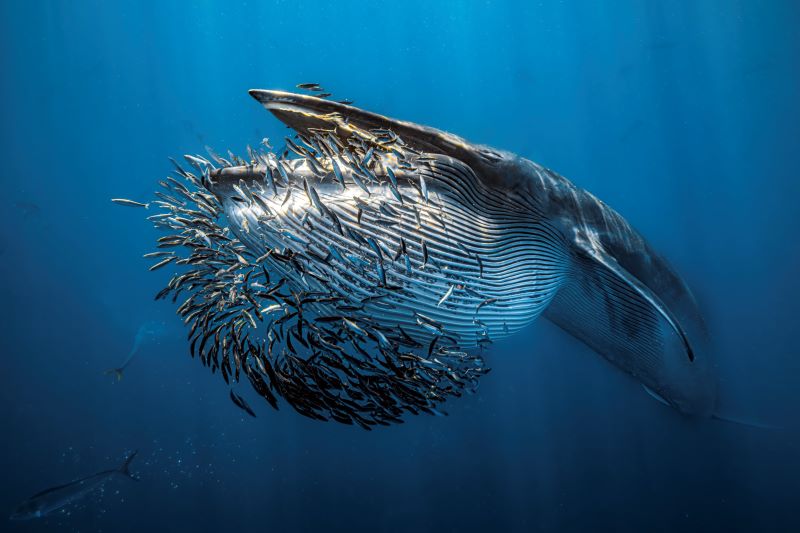
Photo: Rafael
Fernandez Caballero
Lisa Stengel from the United States was named Up & Coming Underwater Photographer of the Year 2024 for her image of a mahi-mahi catching a sardine, in Mexico. Stengel used both a very fast shutter speed and her hearing to catch the moment. “If you listen there’s an enormous amount of sound in the ocean,” she explained. “The action was too fast to see, so I honed in on the sound of the attacks with my camera to capture this special moment.”
“It is such an exciting time in underwater photography because photographers are capturing such amazing new images, by visiting new locations and using the latest cameras,”
commented judge Alex Mustard. “Until this year I’d hardly ever see a photo of a mahi mahi,
now Lisa has photographed one hunting, action that plays out in the blink of an eye.”
The Underwater Photographer of the Year contest is based in the UK, and Jenny Stock,
was named as British Underwater Photographer of the Year 2024 for her image “Star
Attraction”, which finds beauty in species of British wildlife that are often overlooked.
Exploring the west coast of Scotland, Stock explained “in the dark green depths my torch
picked out the vivid colours of a living carpet of thousands of brittle stars, each with a
different pattern. I was happily snapping away, when I spotted this purple sea urchin and I
got really excited.”
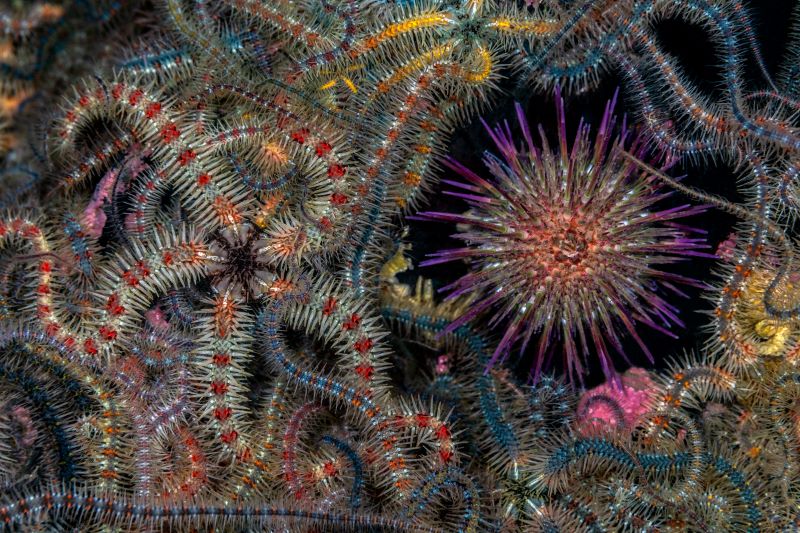
Photo: Jenny Stock
In the same contest, Portuguese photographer, Nuno Sá, was named ‘Save Our Seas
Foundation’ Marine Conservation Photographer of the Year 2024, with his photo ‘Saving
Goliath’, taken in Portugal. Sá’s photo shows beachgoers trying to save a stranded sperm
whale. The picture gives us hope that people do care and want to help the oceans, but also
warns us that bigger changes are needed. “The whale had been struck by a ship and its fate
was sealed,” explains Sá. “An estimated 20,000 whales are killed every year, and many more
injured, after being struck by ships-and few people even realise that it happens.”
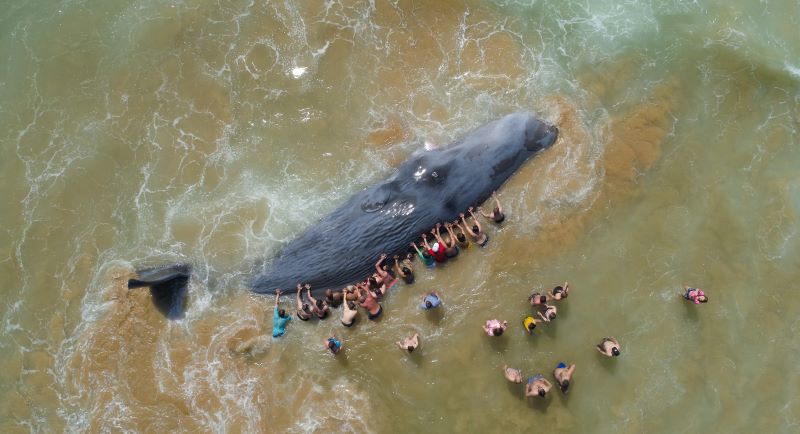
Photo: Nuno Sá
More winning images can be found at www.underwaterphotographeroftheyear.com.
About Underwater Photographer of the Year
Underwater Photographer of the Year is an annual competition, based in the UK, that celebrates photography beneath the surface of the ocean, lakes, rivers and even swimming pools, and attracts entries from all around the world. The contest has 13 categories, testing photographers with themes such as Macro, Wide Angle, Behaviour and Wreck photography, as well as four categories for photos taken specifically in British waters. The winners were announced in an award ceremony in Mayfair, London, hosted by The Crown Estate. This year’s UPY judges were experienced underwater photographers Peter Rowlands, Tobias Friedrich and Dr Alexander Mustard MBE.
Header image: Underwater Photographer of the Year 2024 winner Alex Dawson
News
World’s Best Underwater Photographers Unveil Breathtaking Images at World Shootout 2023
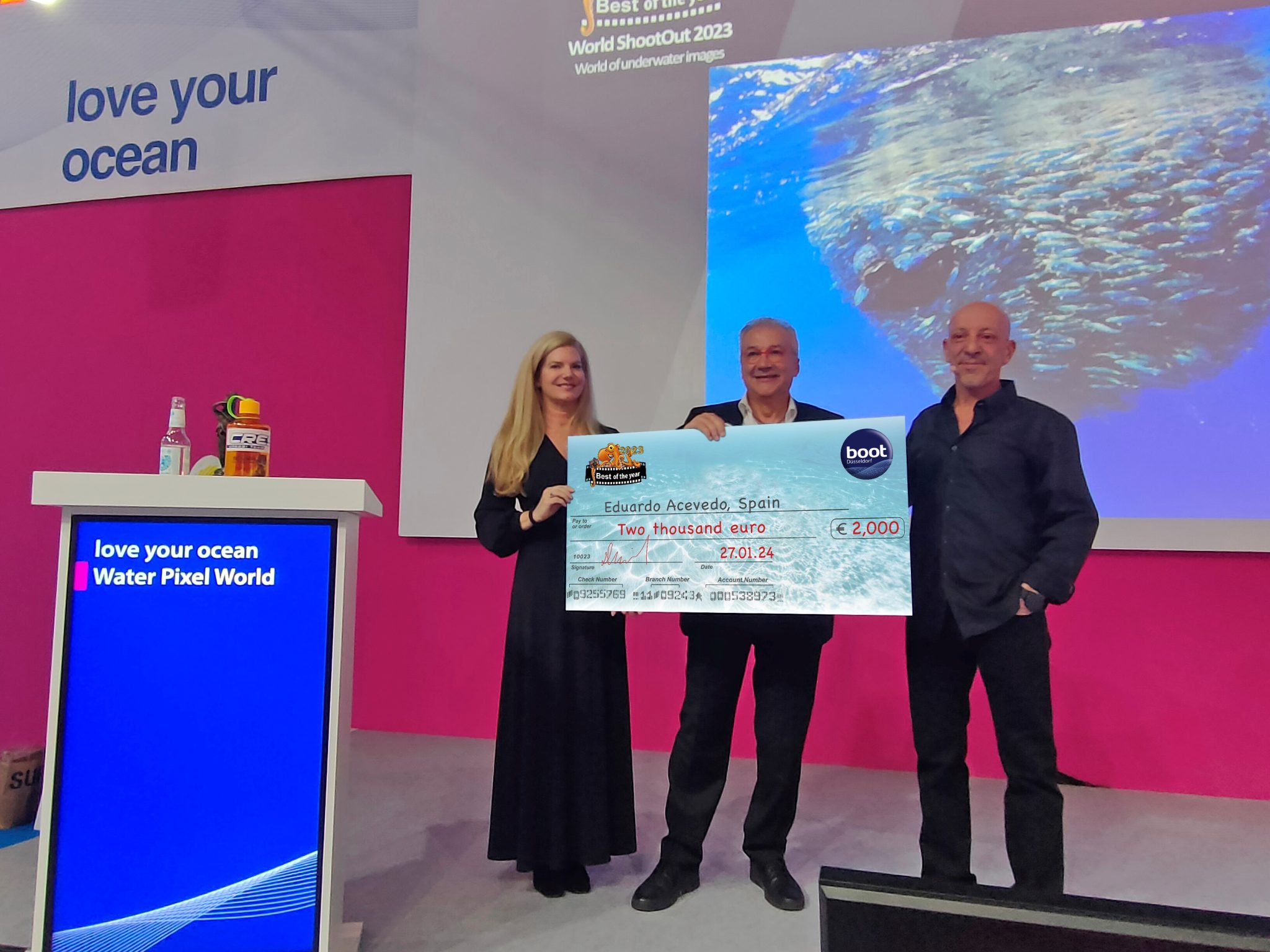
The winners of the prestigious World Shootout 2023 underwater photography competition were announced at this year’s BOOT Show, captivating audiences at the world’s largest diving and water sports exhibition in Dusseldorf, Germany. Hundreds of photographers from 54 countries competed across nine categories, pushing the boundaries of creativity and technical skill.
Grand Prize Winners
- Picture of the Year: Spanish photographer Eduardo Acevedo “secured” the top Honor with the prestigious prize the “boot Dusseldorf Director’s Prize, earning an Andromeda statuette and a €2,000 cash prize.
- Best 5 Images Portfolio: Luc Rooman from Belgium triumphed in this category, winning a dream 4-week diving trip for two to Papua New Guinea, valued at $18,900.
- Amateur Photographer: Alexandra Ceurvorst from the USA impressed the judges with her talent, taking home the 1,000 € cash prize award.
Celebrating Diversity and Innovation
This year’s competition saw 11,680 entries from 964 photographers, showcasing a remarkable spectrum of skills and perspectives. From the intricate wonders of Macro photography to the beauty of “Black Water”, the “Underwater Fashion” category added a touch of artistry and innovation, while the ever-important ” Environmental & Conservation” category served as a powerful reminder of the need to protect these fragile ecosystems.
Looking Ahead: AI and Ocean Conservation
World Shootout founder and producer David Pilosof unveiled an exciting addition for the 2024 competition: this year the Environmental category will be focusing on the impact of plastic on our oceans and future.
This category will embrace the potential of AI or other editing software as a tool to amplify the conservation message.
Entrants will submit campaigns of three original underwater photographs dealing with plastic pollution, along with their final AI assistance processing. This innovative approach encourages artistic expression while raising awareness about a critical environmental issue.
Explore the Stunning Collection
Discover the complete album of competition entries by clicking here.
For Low-resolution photos of finalist entries in eight categories, click here.
-

 News3 months ago
News3 months agoHone your underwater photography skills with Alphamarine Photography at Red Sea Diving Safari in March
-

 News3 months ago
News3 months agoCapturing Critters in Lembeh Underwater Photography Workshop 2024: Event Roundup
-

 Marine Life & Conservation Blogs2 months ago
Marine Life & Conservation Blogs2 months agoCreature Feature: Swell Sharks
-

 Blogs2 months ago
Blogs2 months agoMurex Resorts: Passport to Paradise!
-

 Blogs2 months ago
Blogs2 months agoDiver Discovering Whale Skeletons Beneath Ice Judged World’s Best Underwater Photograph
-

 Gear Reviews3 months ago
Gear Reviews3 months agoGear Review: Oceanic+ Dive Housing for iPhone
-

 Marine Life & Conservation2 months ago
Marine Life & Conservation2 months agoSave the Manatee Club launches brand new webcams at Silver Springs State Park, Florida
-

 News3 months ago
News3 months agoWorld’s Best Underwater Photographers Unveil Breathtaking Images at World Shootout 2023
















